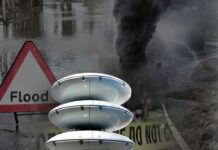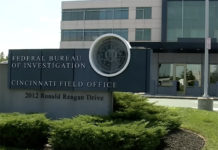By FEMA
The 2017 hurricane season produced 17 named storms, 10 of which became hurricanes (six of those major hurricanes), including the first two major hurricanes (Harvey and Irma) to hit the continental U.S. in 12 years.
In response to the hurricanes, 48 states and the District of Columbia assisted with response and recovery operations, in Texas, Florida and the U.S. territories in the Caribbean, through Emergency Management Assistance Compacts.
FEMA and its federal partners, provided 138 million meals, 194 million liters of water, 10.2 million gallons of fuel and installed 1,310 generators to power critical facilities supporting survivors impacted by the four major hurricanes.
(A look at the municipality of Puerto Rico following Hurricane Maria. Courtesy of FEMA and YouTube. Posted on Oct 6, 2017)
Countless additional commodities and comfort were also provided through non-profit organizations, private companies, neighbors and volunteers, from across the country.
2017 was also historic for wildfires across the western United States, and included two of the most devastating to ever impact California; the Tubbs fire in the northern counties, and the Thomas fire, which gained the distinction of becoming the largest wildfire in modern California history.
(FEMA, California’s Office of Emergency Services, the Environmental Protection Agency and the U.S. Army Corps of Engineers have set up a command post at Sonoma County’s Emergency Operations Center to deal with the federal, state and local response to the California wildfires. Courtesy of FEMA and YouTube. Posted on Nov 24, 2017)
The Office of External Affairs was created in 2007, bringing together several independent offices and adding two new divisions to enhance a coordinated communications program for the agency.
The Office’s purpose is to maintain visibility regarding public and internal communications; coordinate routine and special communications; ensure accurate, useful, timely, synchronized, targeted communication; and provide continuous messaging to meet the needs of the situation.
The Office also serves as an advisor to FEMA program and support offices on decision making, development, and maintenance of policies and programs to ensure that activities are responsive to stakeholder, media, congressional and other audiences
 Their mission is to engage, inform and educate all FEMA stakeholders in support of the Agency’s programs and initiatives to achieve its mission.
Their mission is to engage, inform and educate all FEMA stakeholders in support of the Agency’s programs and initiatives to achieve its mission.
Source: FEMA External Affairs Year in Review






















